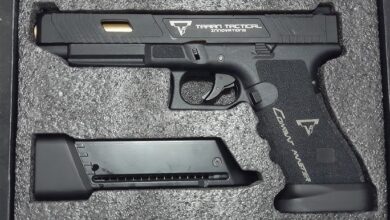E-Bike vs. Electric Skateboard: Which Fits Your Lifestyle?

Modern commuting has evolved beyond traditional bicycles and skateboards. Today,
electric bikes and electric skateboards have emerged as convenient, eco-friendly options that suit different lifestyles.
But how do you decide which one is better for you? In this article, we’ll compare the ebike and electric skateboard, evaluating their features, performance, costs, and more.
By the end, you’ll have a clearer idea of which fits your lifestyle best.
What Is an E-Bike?
An e bike is a bicycle equipped with a motor and battery to assist with pedaling. These bikes offer convenience for commuting, recreation, and even adventure riding. They’re easy to operate, efficient, and require minimal maintenance compared to traditional vehicles.
E-bikes function by combining human pedaling with motor assistance. Sensors detect the rider’s pedaling effort and adjust the motor’s power output accordingly. This seamless integration enhances the riding experience, providing a boost when needed while maintaining the feel of traditional cycling.
Riding an e-bike also involves physical activity, though it is less strenuous than riding a traditional bicycle. This moderate effort provides cardiovascular benefits, making it an excellent option for incorporating fitness into daily routines. Urban commuters, in particular, can enjoy a convenient way to stay active without overexerting themselves, a healthy choice that fits seamlessly into busy schedules.
E-bikes excel in urban settings, offering solutions to common challenges like parking difficulties and traffic congestion. With quick travel times and the ability to navigate through dense city streets, e-bikes are ideal for commuters seeking efficiency. Moreover, their rechargeable batteries can be conveniently powered up at home or the office, ensuring usability and convenience.
Key Features of an E-Bike
E-bikes combine traditional cycling with electric power, making them a versatile option. Here are some defining features:
- Battery: Powers the motor and determines the range of the e-bike.
- Electric Motor: Provides assistance to the rider, making it easier to pedal, especially uphill or against the wind.
- Pedal Assist: Most e-bikes offer pedal assist, where the motor kicks in to make pedaling easier.
- Throttle Option: Some models allow you to accelerate without pedaling.
- Speed and Range: Depending on the model, e-bikes can reach speeds up to 28 mph and have a range of 50-100+ miles per charge.
- Eco-Friendly: Powered by rechargeable batteries, e-bikes reduce carbon emissions.
Types of Electric Bike
E-bikes are categorized into various types based on usage, including commuter bikes, mountain bikes, folding models, utility-focused, and fat-tire bikes. Let’s take a closer look at the most common ones:
1. Commuter E-Bikes
These are designed for daily urban travel, perfect for getting to work or running errands. They usually feature lightweight frames, smooth tires, and comfortable seats for easy riding on paved roads. Many commuter e-bikes also include practical features like built-in racks, lights, and fenders for all-weather use.
2. Folding E-Bikes
Compact and portable, folding e-bikes are ideal for urban commuters or anyone with limited storage space. They can be folded up to fit in car trunks, closets, or even under a desk at work.
The Leoguar Flippo best folding electric bike is a prime example in this category. It features a lightweight frame, a seamless folding mechanism, and a 350W motor. With a 480Wh lithium-ion battery, it delivers a range of up to 45 miles per charge, making it perfect for city commuting. It compacts to just 36.22” * 18.5” * 29.92” dimensions, and its 55 lbs of weight makes it highly portable and easy to carry onto buses, trains, or tight spaces.
3. Utility-Focused E-Bikes
Utility fat tire electric bikes are built to carry heavy loads, whether it’s groceries, tools, or even passengers. They feature durable frames, large cargo racks, and high payload capacities, making them ideal for errands and deliveries.
The Leoguar Sprint is a heavy-duty fat-tire e-bike designed for utility and versatility. With its rugged frame, oversized 26*4.0″ tires, 300 lbs of payload capacity, and compatibility to attach a rear rack, it’s perfect for hauling cargo or exploring off-road paths. Its fat tires also ensure stability on diverse terrains like snow, sand, or gravel.
What Is an Electric Skateboard?
An electric skateboard is a regular skateboard upgraded with a motor and battery. Riders can control speed and braking using a handheld remote or app, making it an exciting option for urban commuters and thrill-seekers.
Compactness is one of the key selling points of electric skateboards. Their small size allows them to be easily carried under one arm or stored in tight spaces such as office corners, lockers, or apartment nooks. This portability makes them an excellent choice for individuals with limited storage options or those seeking a hassle-free commuting solution.
While they excel in terms of mobility and fun, electric skateboards are most effective for shorter distances. They are perfect for last-mile connectivity, such as traveling from a public transit stop to your final destination, or for quick errands around the neighborhood.
However, they require more balance and skill to ride compared to e-bikes.
Speed and Performance
E-Bike: Faster, Better for Commuting
E-bikes are built for speed and endurance. With motor-assisted pedaling, e-bikes can achieve speeds of up to 28 mph, making them perfect for commuting or long-distance rides. Their sturdy frames and advanced motors allow riders to maintain consistent speeds on various terrains, including hills and rough paths.
Electric Skateboard: Shorter Speed Range, Fun for Quick Trips
Electric skateboards generally have a lower top speed, averaging between 10-25 mph. While they’re not as fast as e-bikes, their quick acceleration makes them exciting for short urban rides. However, the lack of large wheels and suspensions makes them less suitable for rough or uneven surfaces.
Comfort and Handling
E-Bike: Stable, Comfortable for All Terrains
E-bikes are designed with comfort in mind. Features like wide saddles, shock-absorbing tires, and ergonomic handlebars ensure a smooth ride. Models such as the Leoguar Sprint fast electric bike offer fat tires that handle bumps and off-road terrain with ease, making them versatile for city streets and outdoor adventures alike.
Electric Skateboard: Less Comfortable, Needs Balance
Riding an electric skateboard requires a sense of balance and agility. The small wheels and lack of suspension make it less comfortable for long rides, especially on rough roads. While skateboards are compact and easy to maneuver, the standing position can strain the rider over time.
Range and Battery Life
E-Bike: Longer Range, Ideal for Daily Commutes
E-bikes are equipped with larger batteries, offering a range of 40-100+ miles per charge, depending on the model and usage. This makes the long range electric bike ideal for longer commutes or multiple trips throughout the day without frequent recharging. Most e-bike battery are also removable, allowing riders to charge them at home or the office conveniently. This feature adds flexibility and ensures you’re always ready for your next ride.
Electric Skateboard: Shorter Range, Frequent Recharging
Electric skateboards typically offer a range of 5-10 miles per charge, depending on the battery size and speed. While sufficient for short trips, this limited range can be a drawback for those needing a dependable commuting option. Frequent recharging may also be necessary for daily use.
Cost and Investment
E-Bike: Higher Upfront, Better Long-Term Value
E-bikes typically have a higher initial cost, with quality models ranging from $1,500 to $7,000 or more. However, this upfront cost is balanced by long-term benefits such as durability, lower maintenance, and extended battery life.
Additionally, ebikes can replace daily car commutes, saving costs on fuel, parking, and vehicle maintenance. In some areas, e-bikes may even qualify for tax incentives or rebates, making them an attractive long-term investment for environmentally conscious riders.
Electric Skateboard: Lower Initial Cost, Higher Battery Replacement
Electric skateboards are generally more affordable, with prices ranging from $400 to $2,000+. While the lower upfront cost is appealing, the shorter battery lifespan and limited range may lead to higher replacement costs over time. For casual riders, they’re a cost-effective option, but frequent users might find maintenance expenses adding up.
Which Fits Your Lifestyle?
The choice between an e-bike and an electric skateboard ultimately depends on your lifestyle and priorities:
- Choose an E-Bike If: You’re looking for a practical and versatile commuting option. It’s ideal for those who need a reliable ride for daily commutes, longer trips, or even fitness purposes. Leoguar bike like the Sprint caters to adventurous riders, while the Flippo is perfect for urban dwellers needing a portable solution.
- Pick an Electric Skateboard If: You prioritize portability, fun, and short trips around the city, an electric skateboard is a fantastic choice. Its compact design and lower cost make it a popular option for students, young professionals, and thrill-seekers who want a fun, eco-friendly way to travel short distances.
By considering your specific needs, you can select the option that best fits your lifestyle while enjoying the benefits of modern, eco-friendly transportation.




